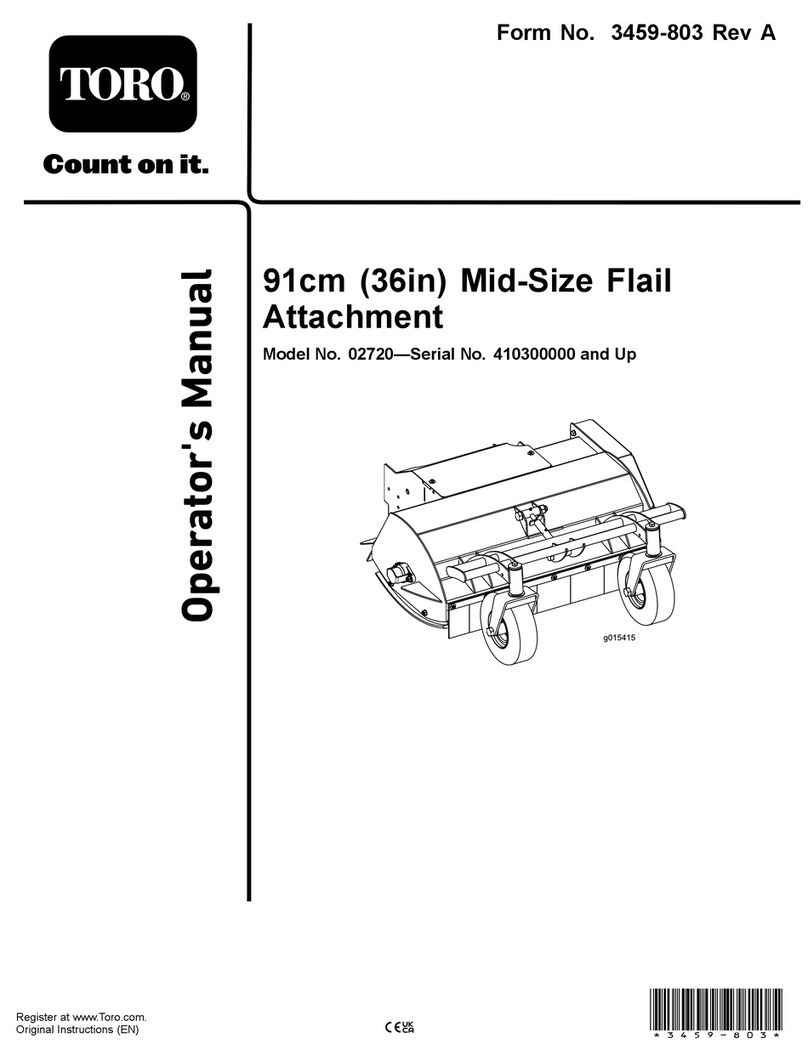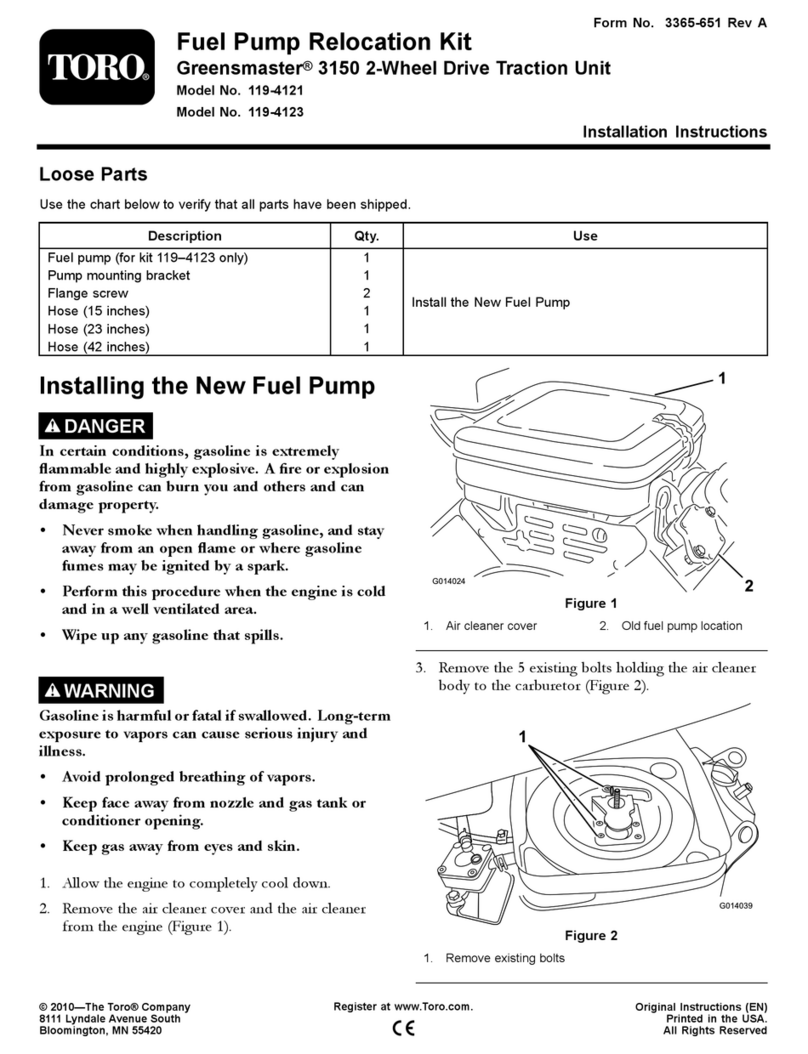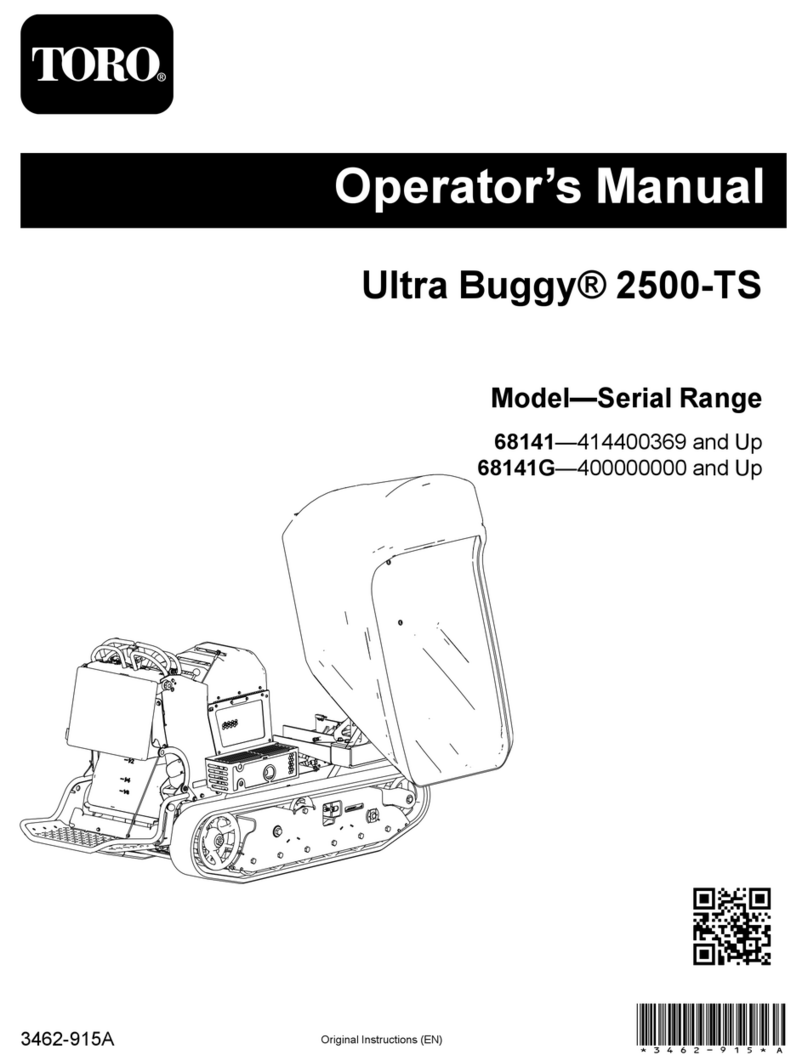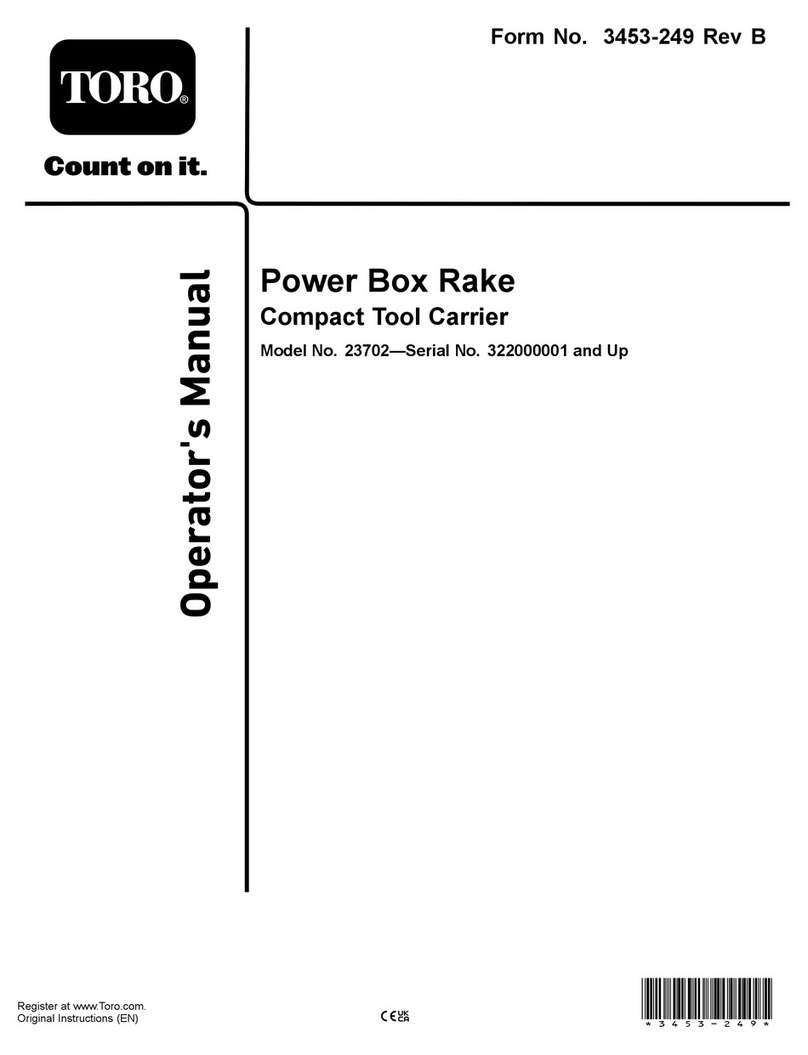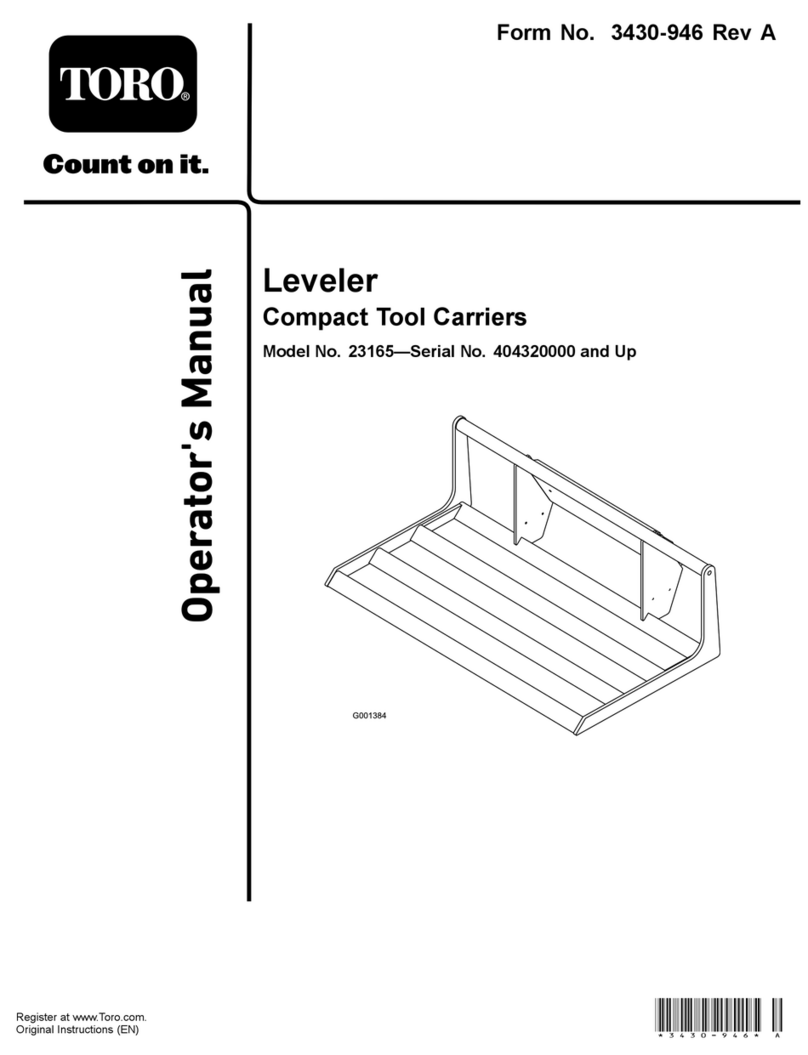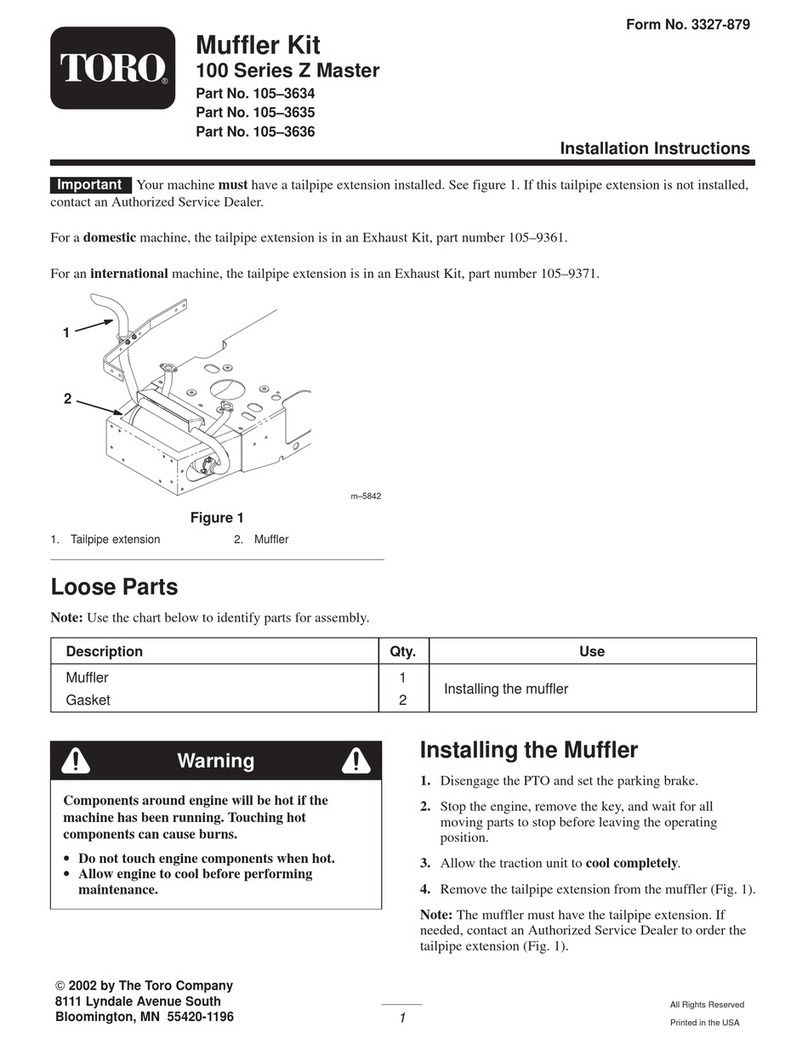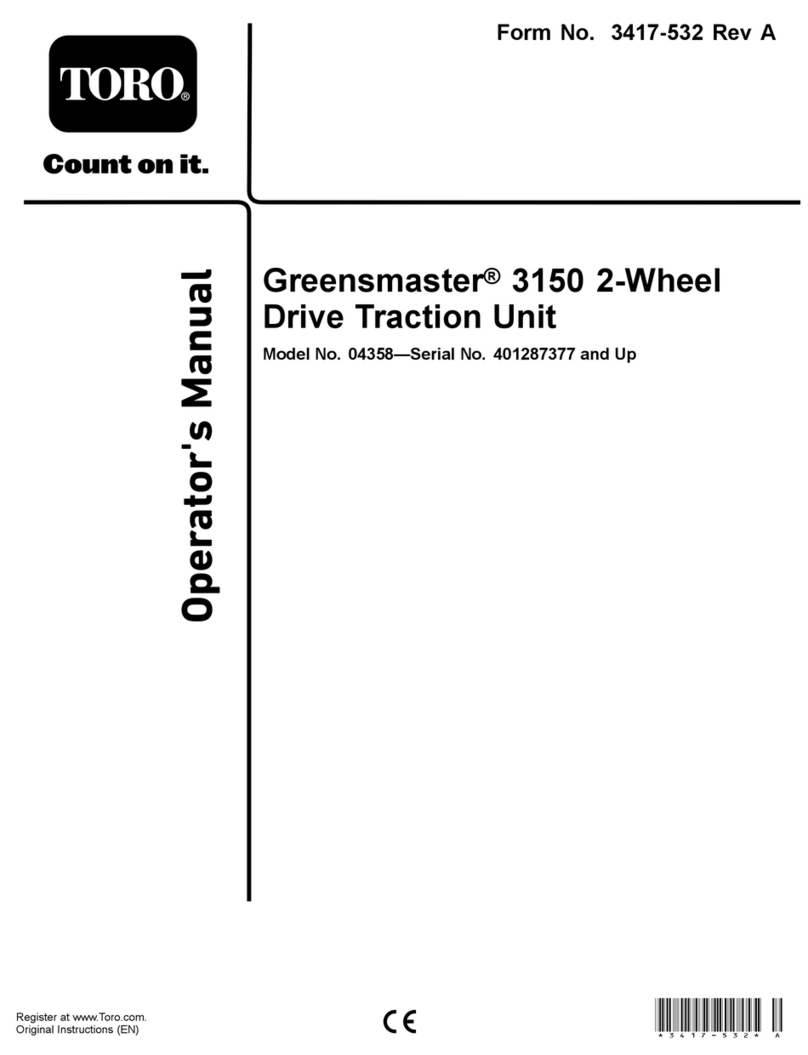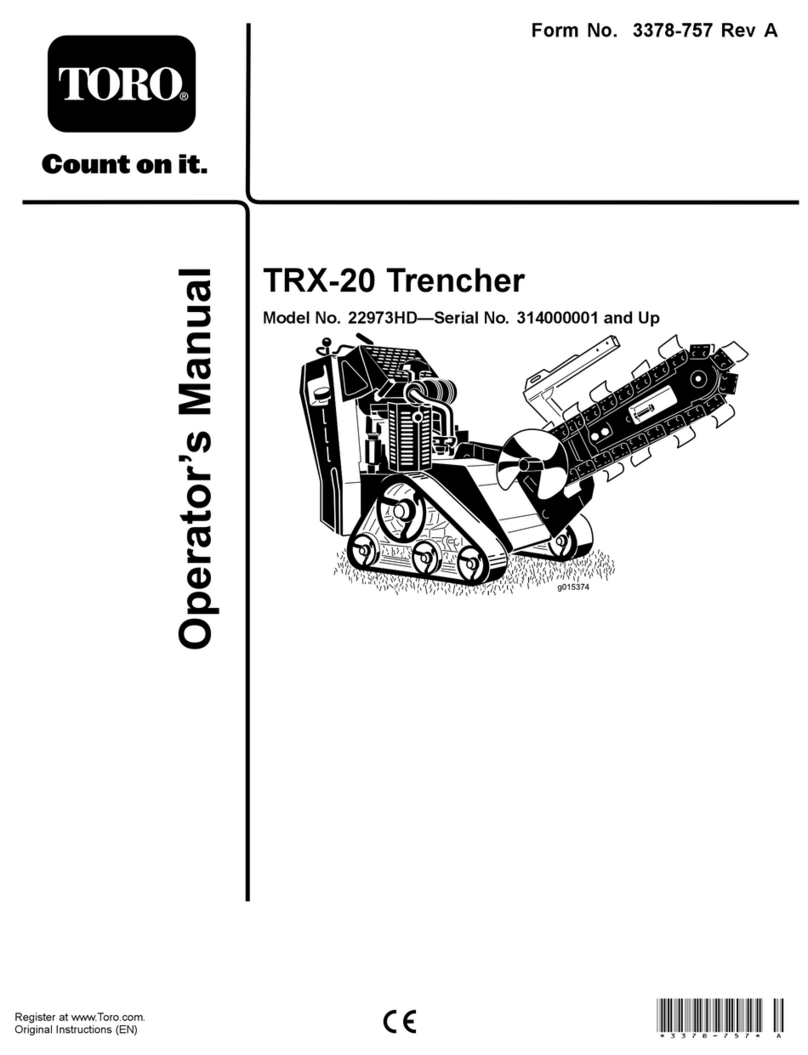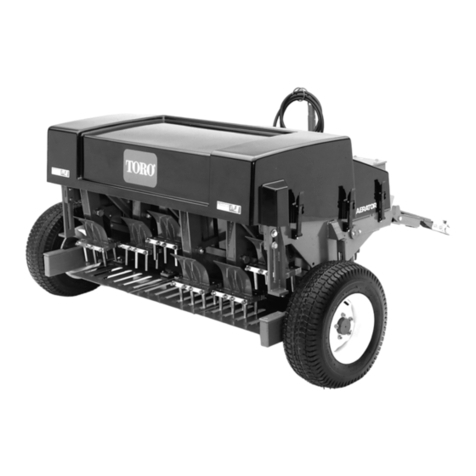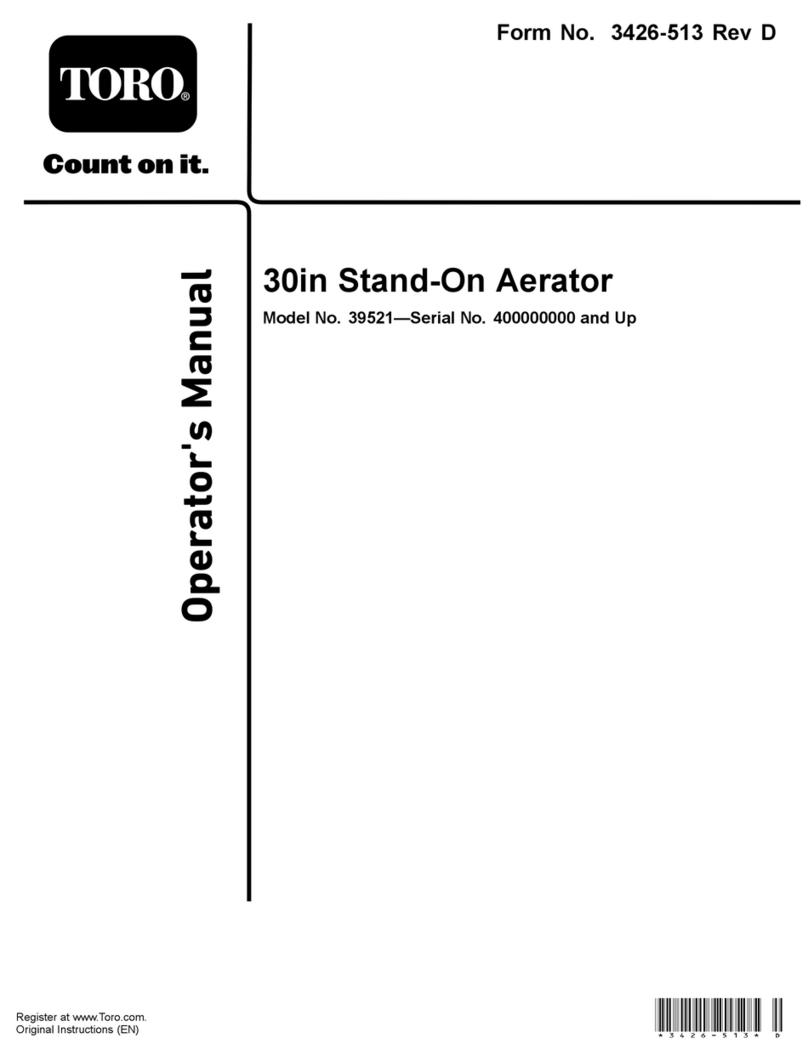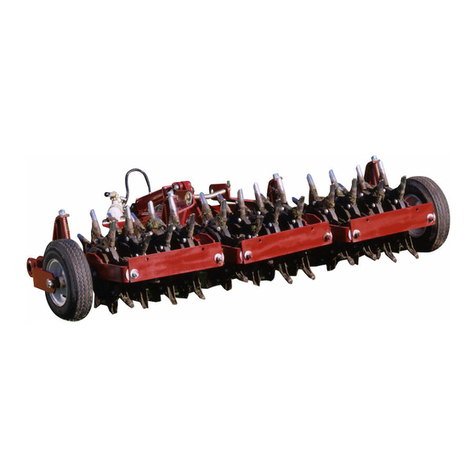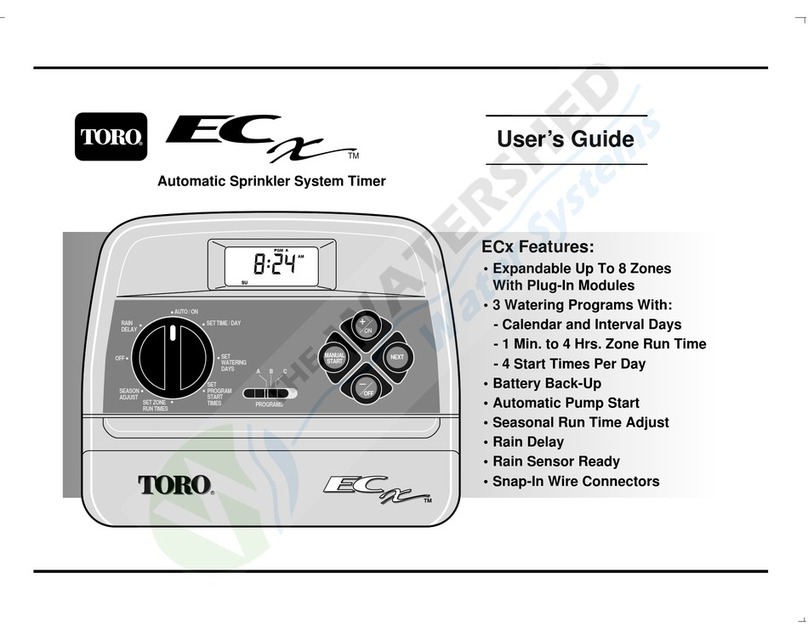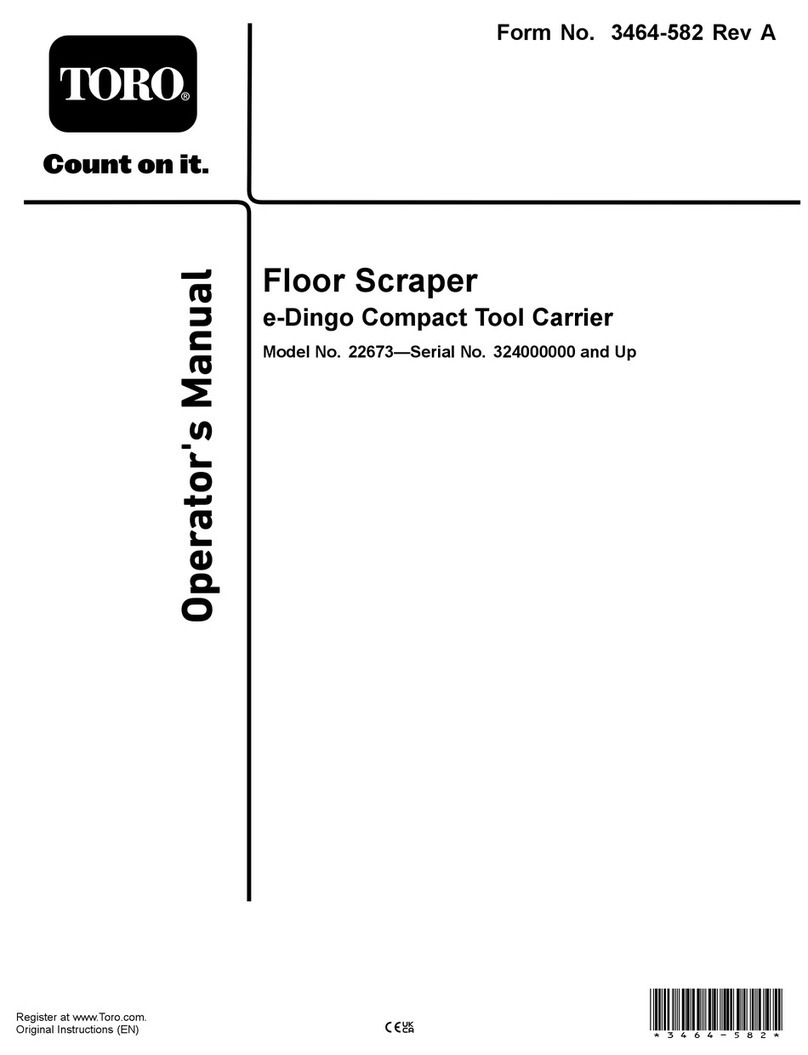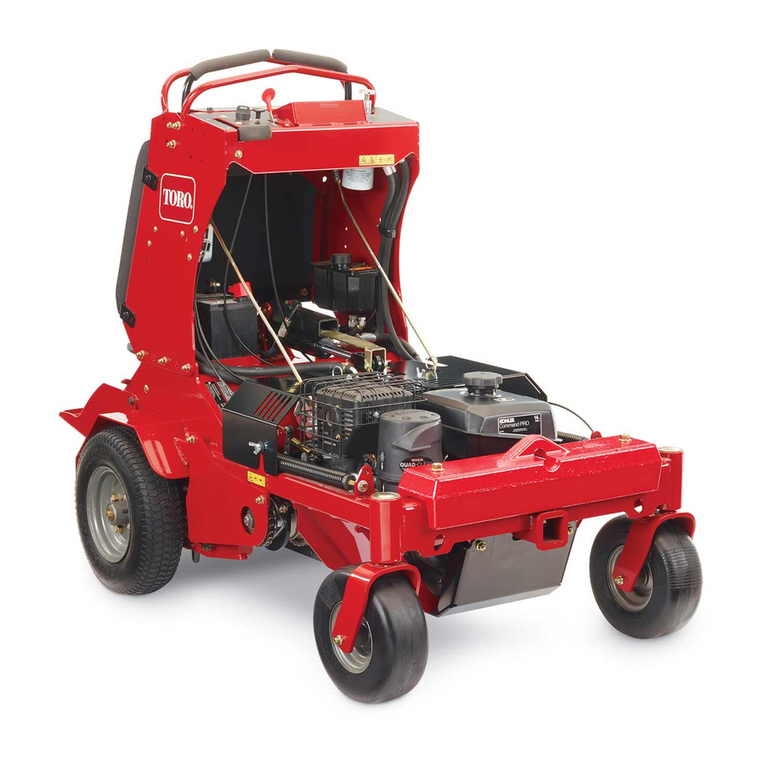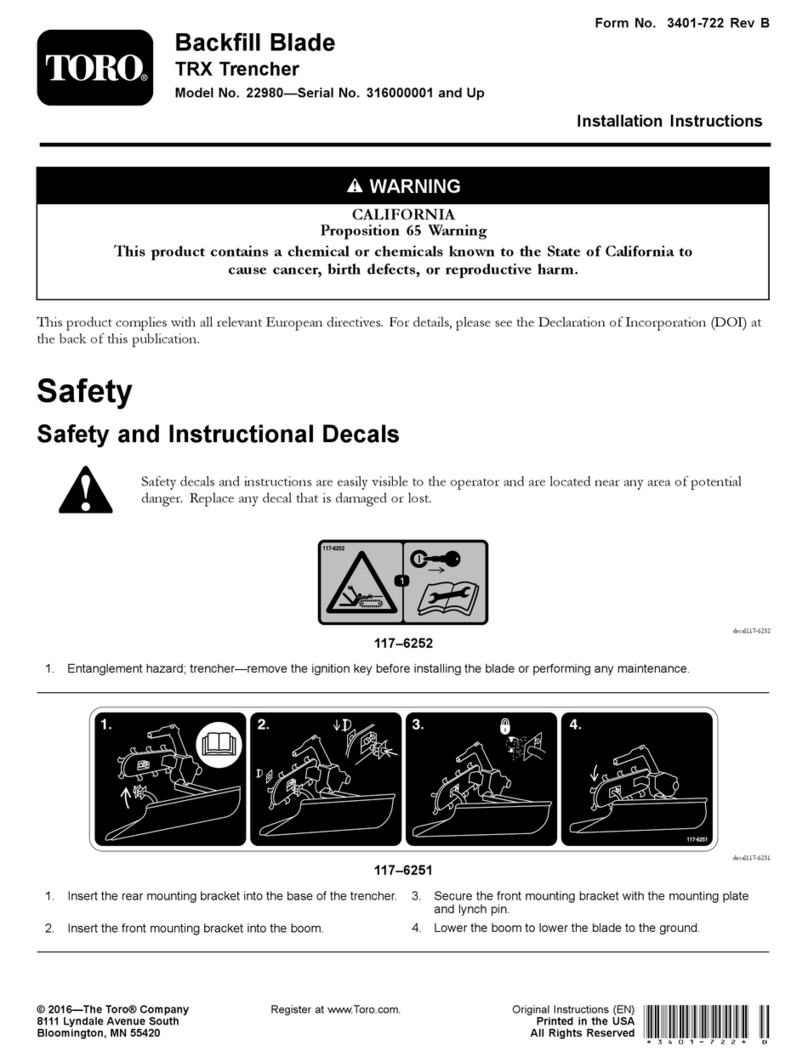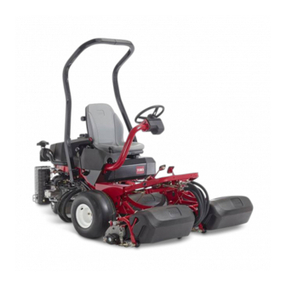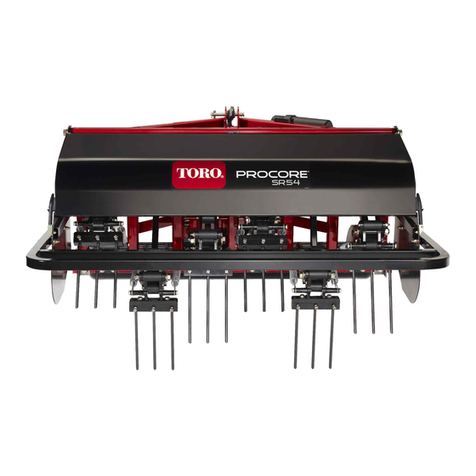
Type: Semi-mounted tow-behind, PTO-driven, deep coring
mechanical turf/fairway aerator.
Tractor Requirements: 18.6–33.6 KW (25–45 hp) @ 540
PTO rpm, category 1, three-point hitch with snubber chains
to restrain side movement and a hydraulic system with
“Lift” and “Float” control provisions. The tractor should
also have provisions for a hydraulic control valve and sys-
tem pressure relief valve to operate two remote single acting
hydraulic cylinders. System pressure should be between
6,895–13,790 kPA (1000 p.s.i. and 2000 p.s.i.)
The hydraulic cylinders, hoses and quick connection coupler
are supplied with aerator. The aerator attaches directly to
the tow tractor. Therefore, read your tractor operators manu-
al or contact the tractor service agency regarding installation
for power take-off driven, semi-mounted implements.
Tractor Attachment: Two pins are provided provided for
attaching the lower links of the tractor, and three-point
hitch to the aerator . Clamps are provided for rigid mount-
ing. The upper link of the hitch is not used or required. The
tractor hydraulic system provides the power to raise the aer-
ator for transport, and provides the “Float” control so the
aerator will follow the ground contour. A rack- and- pinion
gear, along with a screw-adjustable link maintain attitude
control for the aerator. Two caster wheels, out board from
the aerator, partially support the weight of the unit. The
remaining weight is transferred to the tractor.
Speed: 2.9–3.5 kmh (1.8 to 2.2 mph)—Aerating. 24 kmh
(15 mph) maximum—Transport. Transport speed should
vary with tractor and terrain.
Maximum PTO Speed: 540 rpm, 1-3⁄8” six-spline drive
shaft.
Maximum Top Crankshaft Speed: 400 rpm.
Frame Construction: Welded tubular and structural steel.
Coring Head Construction: Welded structural steel bar
and plate.
Tires: 16.5 x 6.5-8 ,6 ply, two wheels mounted on caster
forks, out board of frame.
7
Specifications
Tire Scrapers: Removes soil build up from each
wheel. Adjustable for desired clearance.
Drive Line: Ag-type, telescoping drive shaft with safe-
ty shields. Two cardan-type universal joints with ratch-
et type torque limiting clutch. Quick-lock, toolless cou-
pling, provided at both ends. Grease fittings for lubri-
cation.
Gear Power Train: Spur gear type gear box with pro-
visions for selecting the correct gear ratio to time the
aerator’s operating speed with the ground speed of the
tractor. Two timing gears are required (not included)
and must be selected for each individual application.
Drive line drivesare completely sealed. All compo-
nents operate in oil with anti-friction bearing provided.
Right angle gear box with two output shafts, coupled
and driven from the gear box. Gear box is fully sealed
with all components operating in oil. Hardened and
tempered bevel gears with anti-friction bearings.
Two integral gear boxes within the aerator frame drive
the flywheel and plungers for the coring tines. Gear
boxes are fully sealed with anti-friction bearings and
hardened and tempered spur gears operating in oil.
These gear boxes are coupled and driven from the right
angle gear box previously listed.
Lubrication: All gear boxes are filled at the factory
with SAE 80w/90 multi-viscosity gear oil. Each gear
case has provisions for checking oil level and drain
plugs for servicing its components. A breather is pro-
vided to prevent excess pressure for each gear case.
Grease fitting are provided to lubricate bearings and
suspension components.
Hydraulic System: Two, single-acting hydraulic
cylinders provide operation for raising and lowering the
aerator. Hydraulic hoses with quick coupler fittings
attach to the tractor hydraulic system.
Plungers: Fabricated structural steel tubing, coupled to
two flywheel crankshafts to provide controlled entrance
and exit of the coring tines into the turf grass. Anti-
friction bearings provided. The standard tine holder
has provisions for six tines and a optional tine holder
